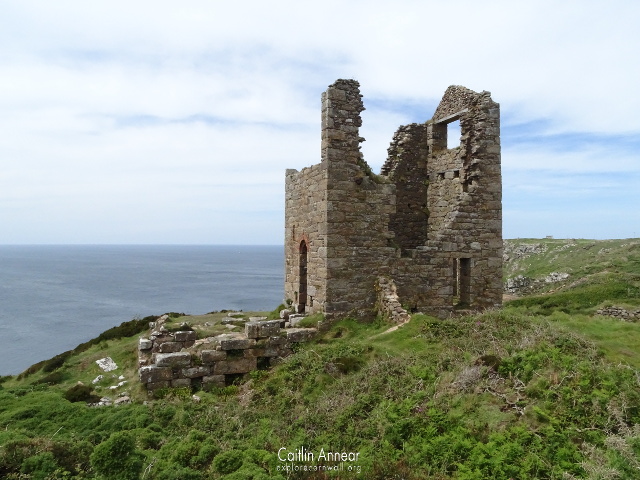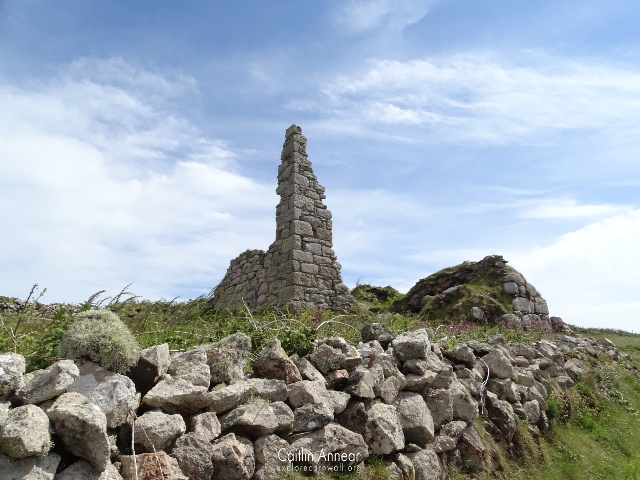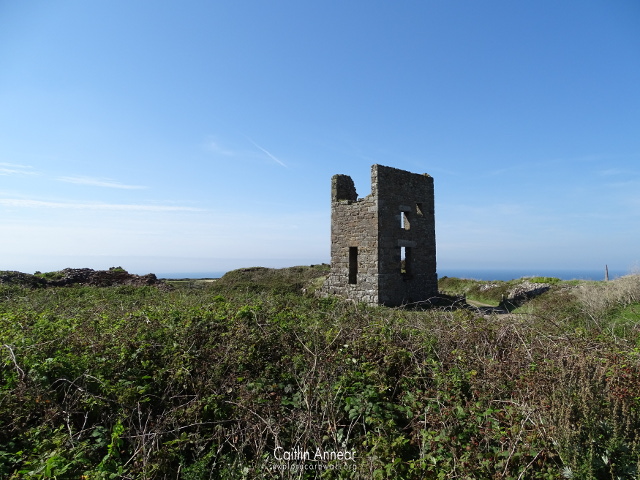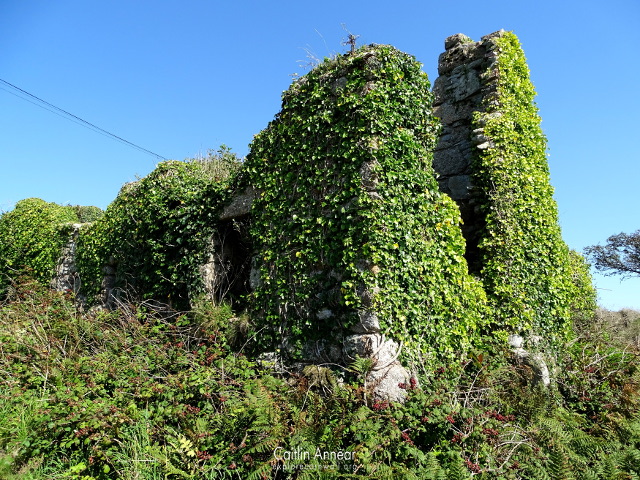Wheal Owles is a mine sat on the cliff path just south of its more famous neighbour Botallack. This particular mine is a rarity in that four engine houses and parts of several others can still be seen today.

Some sections of this mine were already at work by 1725, although they were all separate ventures at this point. In 1810 the first engine was erected, possibly the 22” Boulton and Watt or the 15” whim.
It wasn’t until the 1860’s when several of the smaller ventures were added into one sett that Wheal Owles began to produce large quantities of ore. During this period there were eleven engines, twenty nine miles of tunnels with at least another mile being added each year. Over the next two decades even more small mines were added, and in 1870 Cargodna was renamed West Wheal Owles.

The walled Cargodna shaft where ten people perished in 1893.
The next two decades saw the fortunes of the mine take a real downturn. In 1874 a drop in ore prices led to Wheal Owles, Wheal Boys and Wheal Grouse shutting down and only three engines were left running. Tin prices continued to plummet and more inland sectioned closed, with efforts focused on the West Wheal Owles area. Only the 36” engine on West Wheal Owles was left working in 1884.
In 1893, men was sent to the 65 fathom level of Cargodna shaft to break into what was thought to be richer ground towards Wheal Drea. However, the plans were incorrect and the men broke into the 148 fathoms level of Wheal Drea, releasing all of the backed up water and flooding the workings. The pressure was so great it supposedly blew a crater down near the Kenidjack almhouse. Nineteen men and one boy drowned. The mine was never drained again.

The smaller workings that make up Wheal Owles include: Wheal Edward, Wheal Drea, Wheal Grouse, Cargodna, Wheal Boys, Wheal Gendall, Wheal Chase and Lower Boscean.

The last bits of Cargodna’s 24″ whim.
Wheal Owles, Hanger, Gargotha, Cargodna, Wheal Boys Guide, Wheal Boys Gallen, Wheal Grouse Gallen, Wheal Grouse, Wheal Drea, Wheal Edward Cliff, Corpus Christi, Parkenoweth and Buzza.
Cargodna (140 fathoms/256m), Cargodna Incline, Wheal Edward Incline (60 fathoms/110m), Wheal Owles Engine (196 fathoms/358m), Wheal Edward (85 fathoms/155m), Greenland (160 fathoms/293m), Wheal Drea (150 fathoms/274m), Old Shaft (45 fathoms/82m), Wheal Boys (110 fathoms/201m), Wheal Grouse (80 fathoms/146m), Buzza, Higher Buzza, Lane, Parknoweth and Davey’s.




Different views of the Wheal Owles 30″ pumping engine and what’s left of its chimney.
Engine Houses
Wheal Owles – 1810, 22″ Boulton & Watt pumping engine
Wheal Owles – >1825, 15″ whim
Wheal Owles – 30″ pumping engine
West Wheal Owles – 1857, 36″ pumping engine on Cargodna shaft
Wheal Drea – 1857, 26″ pumping and winding engine
Wheal Edward – 1870, 28″ multifunction whim and stamps with 16 heads
Wheal Edward – 1882, 24″ whim on Cargodna shaft
Wheal Edward – 1882 – multifunction engine, hoisting drum removed and 16 more stamps added
Wheal Grouse – 30″ stamps engine
Wheal Grouse – 40″ pumping engine
Wheal Boys – pumping engine
Parknoweth – 23″ pumping engine
Parknoweth – 20″ whim engine
Chycornish – engine house

The 26″ multipurpose engine at Wheal Drea that was used to pump from Wheal Drea shaft and wind from Greenland.
Output
Wheal Edward: 1821-56 2 tons (2,032kg) of black sin and 955 tons (970,325kg) 9% copper. 1859 874 tons (888,025kg) copper.
Wheal Owles: 1837-9, 1841, 1853-93 8,540 tons (8,677,041kg) tin and 340 tons (345,456kg) 7% copper. 1878-9 5 cwt (254kg) uranium and some bismuth. 50 tons (50,802kg) arsenic.
Parknoweth: 1837-41 42 tons (42,674kg) tin.
The Wheal Owles/Cargodna/Wheal Edward engine houses are all sat alongside public footpaths. The Wheal Drea engine is on private land but can be clearly seen from the lane running alongside it.
The nearest parking is the National Trust Botallack carpark; this is a pay and display carpark or free for members.
Brown, K. and Acton, B. (2007) Exploring Cornish Mines: Volume One. 4th edn. Truro: Landfall.
Dines, H. G. (1956) The metalliferous mining regions of south-west England. British Geological Survey.
Nance, D. and Brown, K. (2014) A complete guide to the engine houses of West Cornwall. Gloucestershire: Lightmoor Press.
Sharpe, A. (1993) St Just: An archaeological survey of the mining district volume II. Available at: http://map.cornwall.gov.uk/reports_event_record/1992/1992R032.pdf (Accessed: 30 August 2019).








